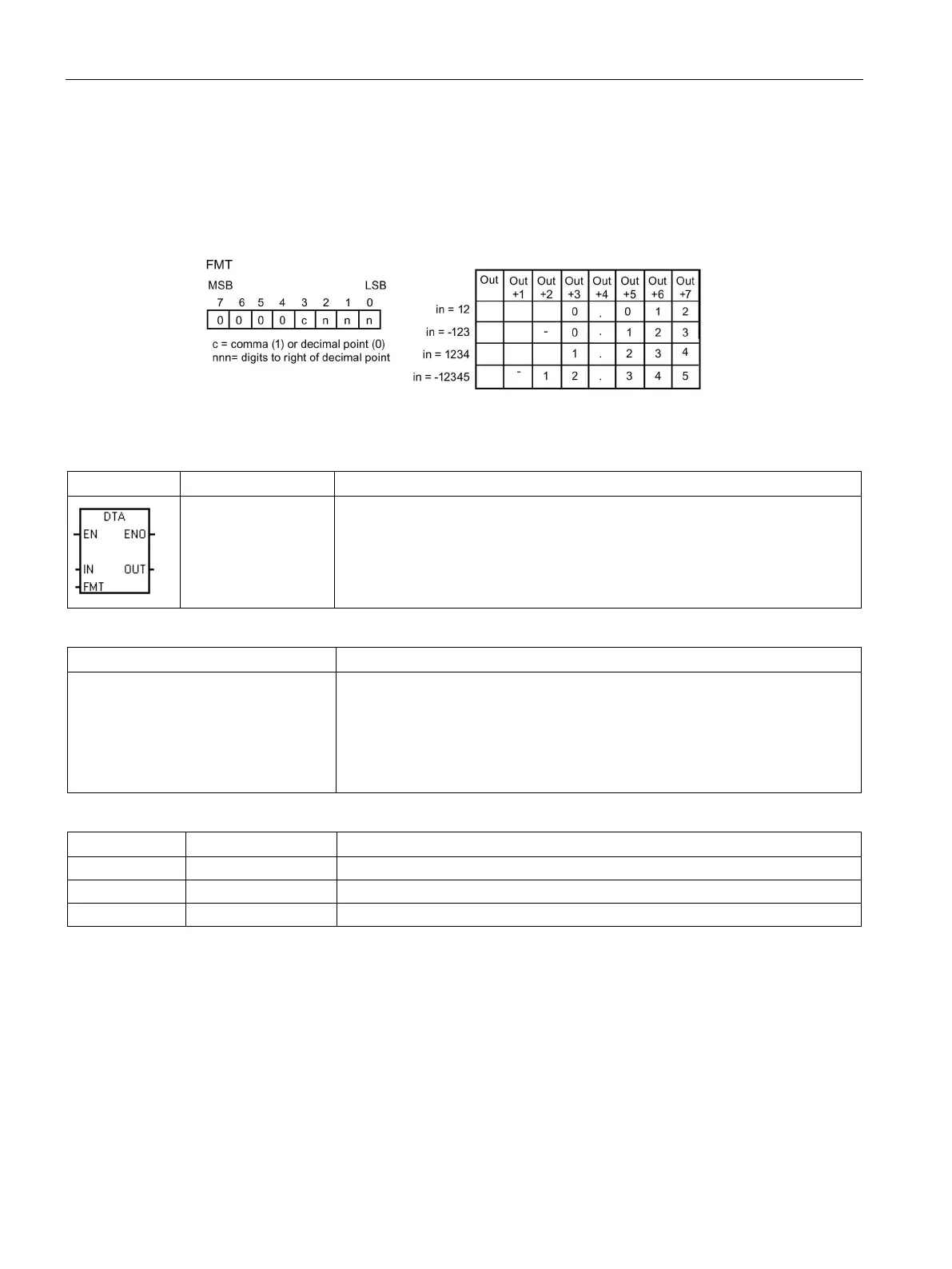Program instructions
7.5 Convert
S7-200 SMART
204 System Manual, 09/2015, A5E03822230-AC
The following figure shows examples of values that are formatted using a decimal point (c=0)
with three digits to the right of the decimal point (nnn=011).
FMT operand for the integer to ASCII (ITA) instruction
The
instruction converts a double word IN to an array of
ASCII characters. The format parameter FMT specifies the conversion precision
to the right of the decimal. The resulting conversion is placed in 12 consecutive
bytes beginning with OUT.
Non-fatal error conditions with ENO = 0
• 0006H Invalid indirect address
• 0091H Operand out of range
• FMT bit is not zero for 4 most signif-
icant bits, of the FMT byte
• nnn > 5
• None
ID, QD, VD, MD, SMD, SD, LD, AC, HC, *VD, *LD, *AC, Constant
IB, QB, VB, MB, SMB, SB, LB, AC, *VD, *LD, *AC, Constant
IB, QB, VB, MB, SMB, SB, LB, *VD, *LD, *AC
The size of the output buffer is always 12 bytes. The number of digits to the right of the
decimal point in the output buffer is assigned by the nnn field. The valid range of the nnn
field is 0 to 5. If you assign 0 digits to the right of the decimal point, then the value is
converted with no decimal point. For values of nnn bigger than 5, the output buffer is filled
with ASCII spaces. The c bit specifies the use of either a comma (c=1) or a decimal point
(c=0) as the separator between whole number and fraction. The most significant 4 bits must
always be zero.

